Heads up – Big Garmin sales are out!!! The Garmin Fenix 8 is $250 off, the Forerunner 965 is $150, the Garmin inReach Mini 2 is $249, and a ton of other Garmin gear has substantial discounts! Go check out the full list here!
I’m DC RAINMAKER…

I swim, bike and run. Then, I come here and write about my adventures. It’s as simple as that. Most of the time. If you’re new around these parts, here’s the long version of my story.

You'll support the site, and get ad-free DCR! Plus, you'll be more awesome. Click above for all the details. Oh, and you can sign-up for the newsletter here!
Here’s how to save!
Wanna save some cash and support the site? These companies help support the site! With Backcountry.com or Competitive Cyclist with either the coupon code DCRAINMAKER for first time users saving 15% on applicable products.
You can also pick-up tons of gear at REI via these links, which is a long-time supporter as well:Alternatively, for everything else on the planet, simply buy your goods from Amazon via the link below and I get a tiny bit back as an Amazon Associate. No cost to you, easy as pie!
You can use the above link for any Amazon country and it (should) automatically redirect to your local Amazon site.
While I don't partner with many companies, there's a few that I love, and support the site. Full details!

Want to compare the features of each product, down to the nitty-gritty? No problem, the product comparison data is constantly updated with new products and new features added to old products!

Wanna create comparison chart graphs just like I do for GPS, heart rate, power meters and more? No problem, here's the platform I use - you can too!

Think my written reviews are deep? You should check out my videos. I take things to a whole new level of interactive depth!

Smart Trainers Buyers Guide: Looking at a smart trainer this winter? I cover all the units to buy (and avoid) for indoor training. The good, the bad, and the ugly.
-
Check out my weekly podcast - with DesFit, which is packed with both gadget and non-gadget goodness!

Get all your awesome DC Rainmaker gear here!
FAQ’s
I have built an extensive list of my most frequently asked questions. Below are the most popular.
- Do you have a privacy policy posted?
- Why haven’t you yet released a review for XYZ product you mentioned months ago?
- Will you test our product before release?
- Are you willing to review or test beta products?
- Which trainer should I buy?
- Which GPS watch should I buy?
- I’m headed to Paris – what do you recommend for training or sightseeing?
- I’m headed to Washington DC – what do you recommend for training?
- I’m from out of the country and will be visiting the US, what’s the best triathlon shop in city XYZ?
- What kind of camera do you use?
-
5 Easy Steps To The Site
In Depth Product Reviews
You probably stumbled upon here looking for a review of a sports gadget. If you’re trying to decide which unit to buy – check out my in-depth reviews section. Some reviews are over 60 pages long when printed out, with hundreds of photos! I aim to leave no stone unturned.
Read My Sports Gadget Recommendations.
Here’s my most recent GPS watch guide here, and cycling GPS computers here. Plus there are smart trainers here, all in these guides cover almost every category of sports gadgets out there. Looking for the equipment I use day-to-day? I also just put together my complete ‘Gear I Use’ equipment list, from swim to bike to run and everything in between (plus a few extra things). And to compliment that, here’s The Girl’s (my wife’s) list. Enjoy, and thanks for stopping by!
Have some fun in the travel section.
I travel a fair bit, both for work and for fun. Here’s a bunch of random trip reports and daily trip-logs that I’ve put together and posted. I’ve sorted it all by world geography, in an attempt to make it easy to figure out where I’ve been.
My Photography Gear: The Cameras/Drones/Action Cams I Use Daily
The most common question I receive outside of the “what’s the best GPS watch for me” variant, are photography-esq based. So in efforts to combat the amount of emails I need to sort through on a daily basis, I’ve complied this “My Photography Gear” post for your curious minds (including drones & action cams!)! It’s a nice break from the day-to-day sports-tech talk, and I hope you get something out of it!
The Swim/Bike/Run Gear I Use List
Many readers stumble into my website in search of information on the latest and greatest sports tech products. But at the end of the day, you might just be wondering “What does Ray use when not testing new products?”. So here is the most up to date list of products I like and fit the bill for me and my training needs best! DC Rainmaker 2024 swim, bike, run, and general gear list. But wait, are you a female and feel like these things might not apply to you? If that’s the case (but certainly not saying my choices aren’t good for women), and you just want to see a different gear junkies “picks”, check out The Girl’s Gear Guide too.

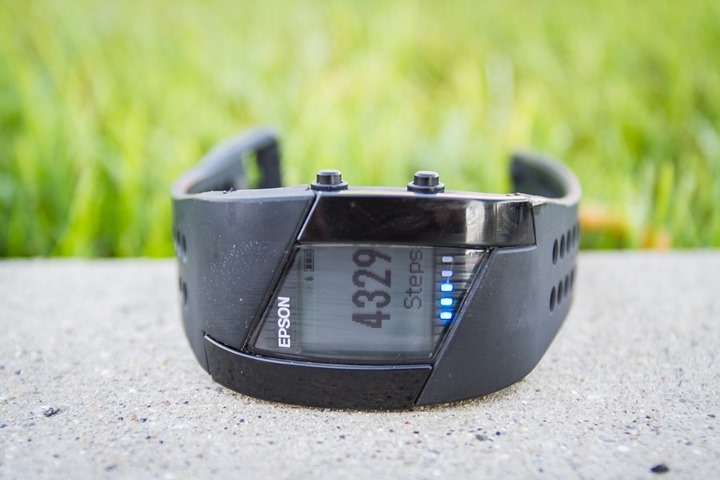

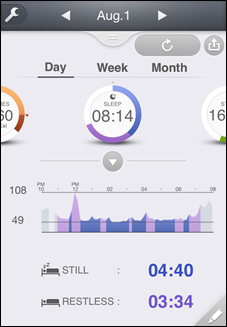
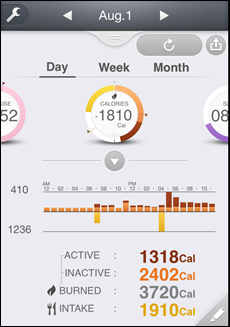
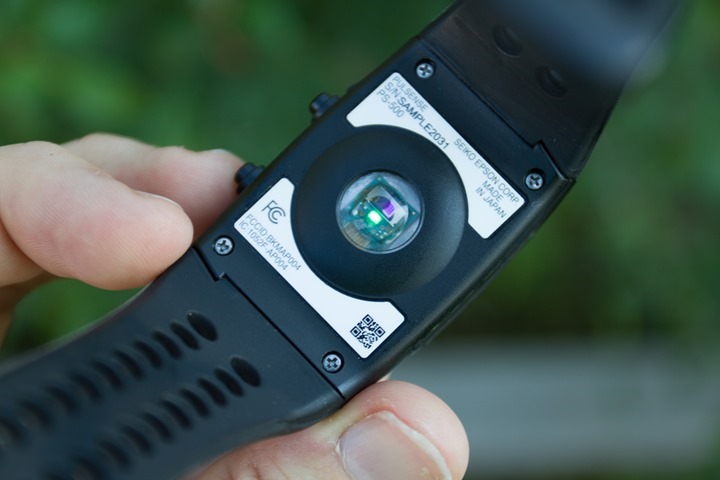
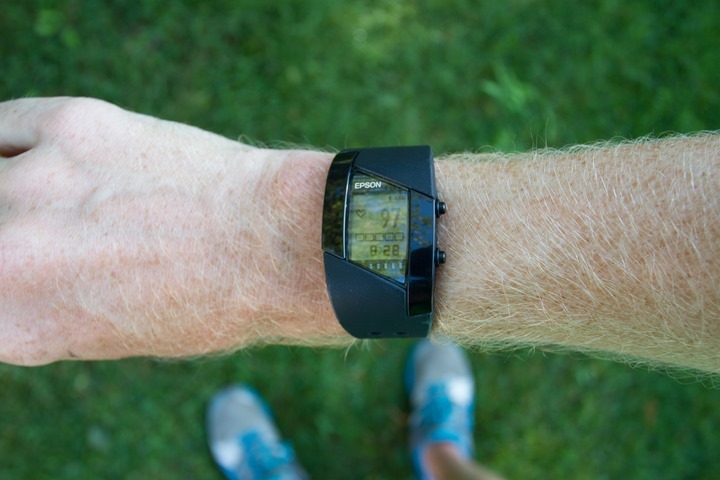
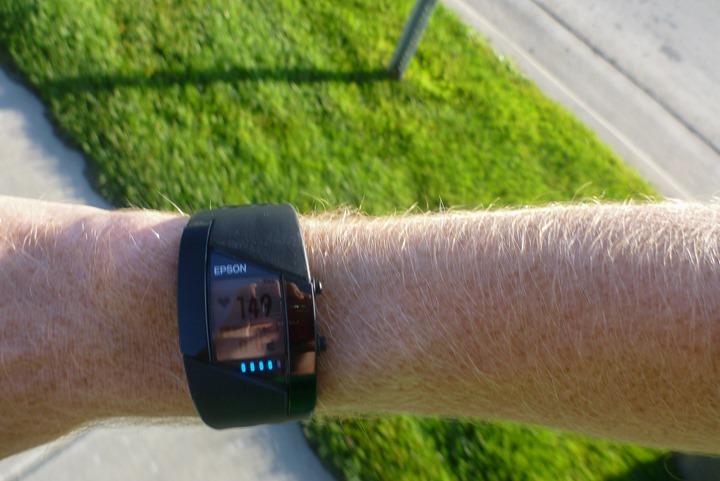
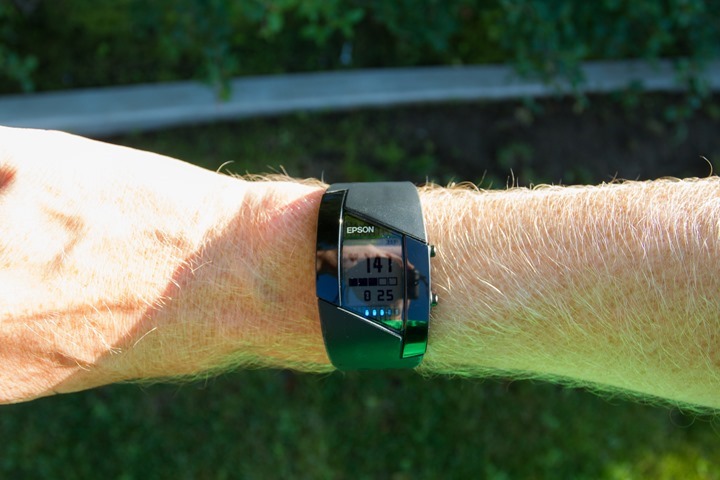
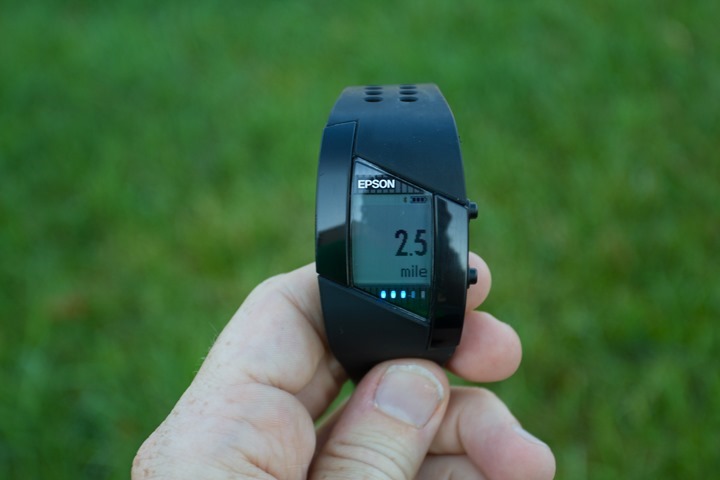

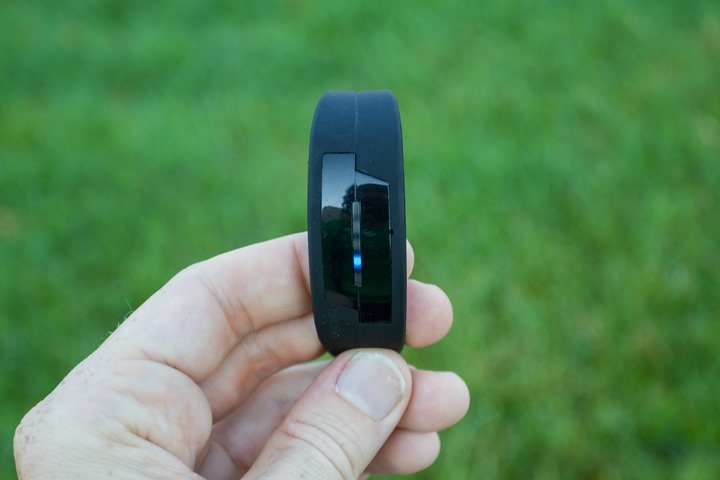
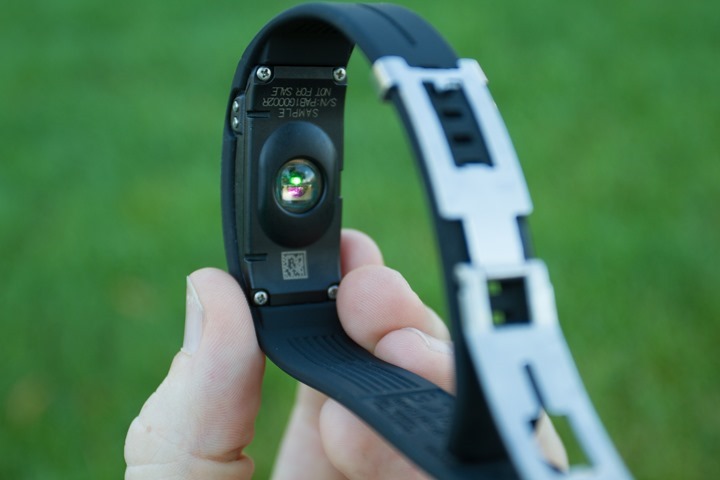
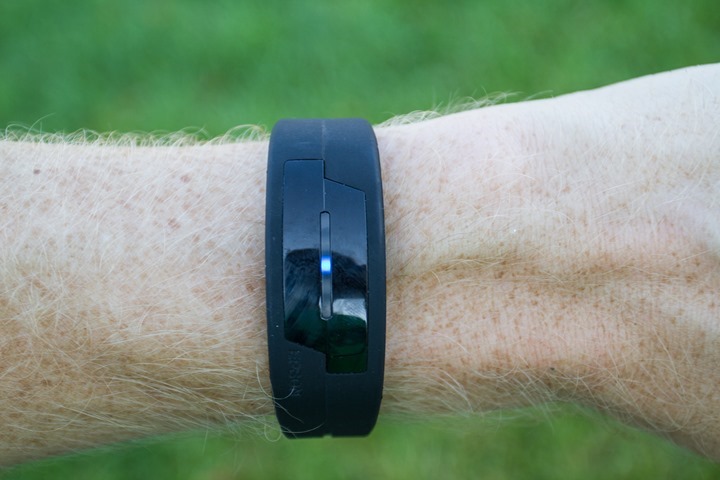
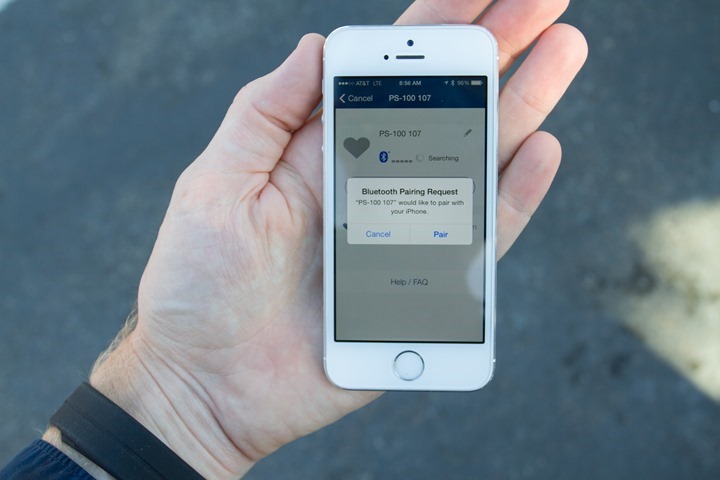
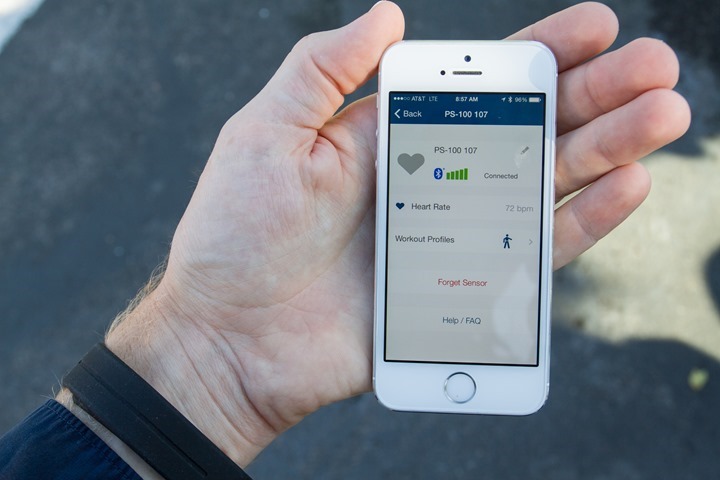












Do they have any plans to release an ANT+ unit in the future?
It was something they were definitely curious about. We chatted about the benefits of using the dual chipset that many companies are doing these days (i.e. Mio, Wahoo, Scosche, etc…). But nothing concrete at this time.
no ant+, not interested :(. otherwise the band looks good. still hoping for the iiiiiiiiiiii pods to be released…
cheers
Can you recommend an activity tracker or smart watch that can measure health markers for 30-40 days? We have rowers crossing the Atlantic and need to collate some data. Thanks in advance
I’d hope the accuracy is pretty good. Epson has a lot of in house talent with light manipulation and imaging. Not only do they play with lasers in printers, but they make nice scanners and projectors too.
While the cross over with projectors might not be too much, I’d imagine decades of knowledge in scanning translate well into optical HR scanning.
Its interesting that its come from Epson. I guessing its a tentative step as a sort of market experiment.
Perhaps in the longer term, if these prove successful at market adoption, we may see its eventual evolution to be a full fledged sports watch, but with the branding of its watch division instead ?
A Seiko.
Imagine a Seiko MarineMaster 300 with full fledged health/activity monitoring capabilities! :)
Since there BLE (cycling) units are still rare and not everyone is willing to buy a new smartphone every two years, I don’t understand why nobody is offering a BLE-to-ANT+-bridge… (yes, I’m looking at you, 4iiii!)
The LEDs for HR zone are probably the coolest part, IMO. Super easy to see where you’re at – could be a cool feature incorporated into more full-feature devices.
ANT+ is a need for me. I would get one if it was dual broadcast.
Very interesting to see all these other companies getting into the market though. Should mean that someone will come up with what I want.
Thabk you for the review Ray!
Could the PS-500 work in the pool? If it is waterproof it might be a good HR recording solution, no chest strap that slips down and no wireless communication needed during swimming, only to sync afterwards. If that works I think it would be totally cool in the pool, despite its not so very cool looks.
Its great to have another manufacturer.
Ray, is this one able to get HRV data? will it be possible someday or it won´t cause the technology is incompatible with that?
Another question..
would you say it measure better? I heard about problems like having to put the band too tight with other manufacturers
I wonder if you can wear one of this in one hand and a Suunto Ambit3 in the other getting the data…
I heard from somebody you have to wear in the same arm Mio/Sosche transmitter to work properly synced with your watch.
Somebody knows something about?
I think this is more interesting from the HR technology stand point. Given the low power usage, if the accuracy holds up for both resting and activity heart rates this might really move things forward. I wonder if they are interested in licensing to other watch manufacturers (I’m looking at you Garmin).
Ray, a few questions, if you know the answer: Is the watch waterproof (and therefore the HR sensor)?
Is the 5 second recording rate settable (either in the watch or in the sensor)? If not, how important do you think getting higher resolution HR data is for training?
How does the watch sync and/or charge? Given it’s sleep capabilities, is there a way to charge it while wearing it?
Will it allow you to sync to other BT devices like a foot pod? I gather it doesn’t at release, but just wondering if it is capable of doing that. And speaking of that, do they expect to add any future capabilities through firmware updates?
BTW, thanks again for attending these events for your readers/fans!
Garmin use Suunto HR technology as it is more accurate.
They don’t. They license it from FirstBeat – albeit also a Finnish company, not the same company. Also, it’s actually not licensed for all products, just some (mostly those above $200US).
As for Mike’s question on waterproofing and a few others here, I’m rounding those up to check with them.
At present the app doesn’t sync with footpod, though the Wahoo Fitness app would and would also sync with a footpod – so that’s one option.
I noticed on the back of the watch it says “Seiko-Epson Corp.” as in the Japanese watch maker. I didn’t know the companies were in business together, but that explains why Epson would make a watch. Seiko makes affordable but good watches, so hopefully that would transfer to the activity watch and band. I’ll be eager to read your full review in a few months.
Seiko is the mother company of Epson. Seiko-Epson is the manufacturing arm and Epson is the marketing arm. The naming and relationship of them sometimes are quite confusing.
Agreed on looks. It needs ANT+. Dual broadcast would be great. That’s why I picked a Stages.
Phone notifications would be great. Any plans for for this?
Hi Ray, and thanks for the great review again.
Does this watch record HR in the water (for swimming)? I’m pissed with the HR strap slipping down at each turn.
Thanks
OK. Activity tracker with built in HR monitor that you can use for exercise. Or- Mio’s with an activity tracker built in. Nice.
Question 1: You indicate that it saves activity data of 480hrs. Does that include HR data?
Question 2: The sleep tracker has two colors, as well as a vertical scale. Normally, the higher the number on the scale, the more ‘active’ and less restful sleep is. However, in the plot shown, the colors don’t match the ‘height’ of the graph. Is it monitoring HR as well as movement to create a composite sleep metric?
With Seiko-Epson’s pedigree I’d have no qualms about buying a first gen product from them, but no ant+ is a deal breaker for me at least
Granted rebroadcasting has potential, but doesn’t the five second transmission rate make this unsuitable for athletes?
Did you get a sense that this technology is superior to that used my Mio (which was an epic fail, RMA for me)
I’m undecided on the 5-second piece. On one hand, it’s not as ideal as every second, but on the other hand heart rate is a lagged metric anyway. Meaning, it’s not like speed or power that’s instant. It takes the body time to react to a change. Thus the very reason if you start from the blocks and run hard, you’re HR won’t catchup in 2-3 seconds, let alone five seconds.
As for being superior to Mio, that depends. I actually don’t see any issues with the sensor itself in Mio (the vast majority don’t, and for those that did on the Link they made a tweak that seemed to fix it for their beta group). Mio’s issue, specifically with the Link, is/was more transmission issues – which looking at those having issues impacted far more people.
IIRC, wasn’t there also an issue with the Mio not working as well on low (i.e., resting) heart rates. So not as good for something like a sleep tracker (unlike the Basis). Maybe the Epson will be good for both. I read somewhere (maybe a link from here), that the Basis provided results as accurate as fancy sleep studies. It would be great to have something that could do both accurately.
Don’t forget that the Basis also measures skin temperature and perspiration so I suspect but don’t know for sue that is what allows it to do the advanced sleep analytics.
I’ve spent some time looking at my sleep patterns with the basis and comparing to the other metrics, it’s hard to do because the present the info on 2 different screens but from what I can see the skin temperature changes quite a bit once asleep.
The only trick with the Basis is it won’t measure HR accurately during any sort of fitness activity. :-/
Hi Ray
Thanks for the head up.
Few questions regarding PS100:
1) I presume it measure distance with accelerometer, so is it possible to calibrate step length. I mean if this is measuring 2.4 mile for a distance of 3.15 mile, can you change the stride length so next time distance is more accurate ?
2) I feel the unit should be atleast 30 mtr water-proof to be an effective all weather fitness tracker. Any idea about same ?
3) Is there any windows phone application which can display heartrate from the unit ?
4) Is it possible to edit type of activity later in the web application e.g, yoga or weight training ?
5) Is sleep detection automatic or need to be start manually ?
Also one query about a non related issue :
Due to my work I stay out of internet coverage area for couple of moths at a stretch. Can you suggest me some offline windows desktop applications for transferring data from Garmin 310XT and later uploading them online, both free and paid.
Thanks again
1) Not sure on calibration – I’ll try and find out.
2) I’m actually not as concerned about that to be honest. It comes down to whether or not you’re swimming with it. If not (and since it doesn’t really track anything there), then it’s mostly just protection against showering and rain – no reason for 30M waterproofing for that.
3) The Adidas app should, it’s your best bet on Windows Phone.
4) Too early to tell there.
5) Manual.
For the FR310XT, check out Sports Tracks (by Zone Five Software) – definitely your best bet.
any word on vibration alarm??
Yes. Or at least the UK version has it- link to epson.co.uk
What about the Epson’s GPS Running Watch with integrated HR-sensor; the Runsense SF-810 ? Did you test it too?
–> link to epson.de
Guys, i want to measure my entire daily activity (calories), sports, sleep and normal activity. Using a chest band for this is not a good solution as it will mess during sleep when i’m turning during sleep.
Is there a watch that measures the calories burned in both normal activity and sports?
Hi All-
I have indeed gone for a run with the GPS watch, and should have some thoughts up in the next few days. I used it the same day as the other products seen above. Impressed with accuracy.
Cheers.
Hi Ray,
can we expect some thoughts about the new runsense series /310/510/710/810)? Maybe even a review?
Thanks in advance,
H.
I’m very curious about your thoughts on the GPS watch (810)
Strangely there aren’t any reviews on the net yet… nobody talks about this watch.. and Epson published it only on the German website…
Secrets.. and mystery.. :-)
Honestly, the reason for the lack of information is that Epson made life difficult for media. They had multiple different embargo’s which were for different countries on different dates but all for the same product.
That ultimately annoys media though because then you’re operating on ‘leftovers’. In my case, I actually had the problem back in early August, but there was the whole embargo confusion plus confusion on different model numbers. For me, I just didn’t have time to deal with that fiasco in the middle of Eurobike+Interbike weeks since there was so little clear information. :-/
Thank you for your reply
Hi,
Any updates on when you will post something about the runsense?
And which of the Runsense did you try, the 710 or 810?
I have been considering buying it, but I can’t get myself to buy a watch before I have read your review…
does it need and can it charged daily
Do you know if it uses the HR function in the calculation of calories burned throughout the day? Also, what does it do with the sleep function? Is it automatic and does it incorporate HR? I wonder how this one compares to the Jaybird Reign soon to come out?
I would like to know too. With continuous HR monitoring, it would seem to make sense for it to use HR in calculation. Failing that, does anyone know any app that take a heart rate reading and calculate calories expenditure?
Also, anyone have news of the actual shipment?
Calories
Yes it calculates calories burned from HR data. They are displayed as “active” calories and your calculated basal metabolic rate as “inactive” calories.
Sleep
They have automatic and semi-automatic sleep detection. For semi-automatic you enter the time you usually go to bed and wake up online/ in the app, I think that just gives the software some idea of what your sleep parameters should be. Sleep detection is a combination of heart rate and motion.
App
Honestly I’m not thrilled by the Pulsense online app, or the limited device support for the phone apps. You can not log type of exercise or log any exercise that you did while not wearing the band (ie swimming). I’ve heard that it occasionally looses the connection in the middle of a bluetooth sync and looses all the data. Personally, I plan to only transfer data via cable to my computer so it can charge at the same time (needs something like 8 hours to completely charge from empty- I’m hoping ~ 1.5 hours a day is enough).
Still trying to decide between buying this one, waiting for the Jaybird Reign, the new Fitbit, or a Vivosmart. Does anyone have any more insight on this one or the upcoming Reign?
Hi Ray,
I’m desperately seeking to ged rid of a cheststrap HRM and have been reading your reviews and user comments for a while. Great work, by the way ! But especially the latest user comments on the Scosche RHYTHM+ have made me even more desperate … a lot of issues from users while your review was so positive ?
The only thing I want is a perfectly reliable HRM sensor around wrist or arm, that works without hickup’s or blackouts in both measuring & transmitting (on BLE). For the rest, my requirements are not so tough .
Price doesn’t matter.
Display (with or without), doesn’t matter (I use RUN.GPS on my HTC One)
Battery life of 4 hrs is already enough for me since I only do short mountainbike trips and some 2-3hrs running.
Looks, i don’t care how good or sleek it looks either.
No, it’s very simple, I only want reliable HRM without a cheststrap.
I’ve looked at Scosche RHYTHM+, MIO Link, Epson Pulsesense Series, Tomtom Cardio series but either there are not sufficient user reviews(Tomtom & Epson) or too many users reported negative experiences (Scosche & Mio).
I really don’t know what to choose and my only plan now is to wait it out untill more (positive) users reports are posted for a specific device.
Admitted, I’m sceptic, but my past experience is that all too often I have purchased items that don’t deliver as advertised.
So, Ray, which device would you recommend for me at this point in time ?
Thanks a lot,
Greets,
DirkB
I think if you look at the number of users on the Scosche without issue (massive, knowing the numbers), versus those posting problems, it’s a itty bitty very low single-digit minority. Also, some of those having problems have to do with a specific watch (The Suunto Ambit3, because Suunto does some wonky stuff there).
I’d still recommend the Scosche + some recording device, then the TomTom Cardio. Keep in mind that anytime you get into the optical sensor range it’s going to vary by person, and you may need to try a few different places on your body. That’s what’s great about the Scosche – there’s a TON of places you can put it to keep trying if your body type doesn’t agree initially. Whereas with the Link/TomTom it’s basically just 2-3 variations around your wrist.
Thanks for the reply, Ray. I will give the Scosche a try then.
Grts,
DirkB
Hi Ray,
This post should be in the Scosche section, but anyways … Just wanted to follow-up and say that I’m really happy with my Scosche Rhythm + as you recommended. So far it delivers as advertised.
Thanks again,
Bye
Hi DC, thank you for the write-up. I do have a question for you, you said both unitw can re-broadcast info to apps. So my question is, if I buy the band, can the epson app be used in real-time to monitor steps, heart-rate etc? (since the band has no display) and bonus q, would a smartwatch like the moto 360 be able to somehow show real-time info from the band to the moto (conceivably in the future? just asking for speculation) I am leaning towards the band because the watch is certainly not a looker but real-time monitoring is a must imo
thx,
riz
Anyone know about the status of the SDK/API? Trying to get a human voice at Epson to find out more but can’t get anyone who even knows that they make an activity tracker. They all keep referring me to the printer department!
And I’ve filled out the online form but no response.
Thanks!
Will this work with new Windows Phones? Will it synch with WP and can you use different apps? I’m new to this and getting this as a gift for someone.
Have you had any further chance to test these Epson products? Still looking for an all in one activity monitor with its own heart rate monitor. Was disappointed with the Basis as the HRM didn’t work during exercise. The the Bluetooth link between a polar loop and a moo alpha meant it heart rate would drop off. Or would it be worth just waiting on basis peak or fitbit charge hr/surge? When ever they are released in the UK….
Yup, the Epson crew is flying in late next week to have a meeting and run through the full product line with me.
I´ve bought as Epson Runsense 710 two days ago. I´ve only had the chance to run with the watch once so far.
Overall:
Good quality, quite nice design, fits great for tiny wrists, Data measured seems to be quite reasonable. Lack of export functionalities from the portal. Great Battery Life.
I too am looking for a activity tracker with built in heart rate that functions well as a watch also. I would like a stopwatch function. API or IFTTT integration too.
I don’t know if anything fits the bill.
Microsoft band. don’t get it wet
Hi any updates from Epson
Feeling a little cheated by pulsense 500. Haven’t had any deep sleep for over a month? Smart alarm not working. Minimal access to my data. Android compatibility with only 4 handsets. Randomly stops measuring pulse. Not convinced resting heart rate is at all accurate, however have only vague indications of my data so cannot test. Fat burning zone had never changed even though I’ve been using it for 2 months and the blurb days it will take time to analyse my resting heart rate and update fat burning zone.
Related to my own reaction to the wristband version, though it is reporting some deep sleep. My main curiosity right now is where all the data is going, but it seems like a silly toy and I think I wasted my money. There are several warnings “This is not a medical device.”. Okay, then. What is it?
Devices that are medical devices go through certifications that take years. On the flip side, it means that they can be used for life-threatening conditions as required. This is not. It’s not a toy, it’s just not medically certified. No common activity tracker is. It’s not worth it to any of the companies (be it Garmin, Fitbit, or even Apple) to do so. The costs are massive, and the upside is non-existent.
I guess I would say that they need to clarify exactly what it is, but I suppose the lawyers would make that impossible. Something along the lines of:
“This device collects data about your physiological activities, but with limited accuracy. This means it should not be regarded as a medical device providing reliable data upon which diagnoses or treatment options can be based, but it can be considered with suitable caution as an indicator of the utility of or necessity for more precise medical tests.”
Or perhaps more fuzzily “Some doctors will consider this data.”
I have the PS-100 and I worked out at a high intensity for about an hour to wear 3 or 4 and sometimes 5 of the lights were lit up at all times. However, it said I only was in my high intensity for 16 minutes and didn’t equal the amount of calories I usually burn. I didn’t know about tapping the device to turn on workout mode? Do i need to do that all the time and should it vibrate when its in effect?
Hi DC,
In your opinion which would you choose: the Mio Fuse or the Epson PS-100?
Thanks
If I’m not wrong, the Fitbit Surge and Epson SF-810 are the only two devices that offer Continuous HR, Activity and Sleep monitoring and GPS for running. Kinda All-in-Ones…..Are you planning to add a review of the S-810 so we can compare with the Surge?
I do plan a review of the 810 – work permitting, planned for late next week.
That said, note that it doesn’t do sleep monitoring nor activity tracking.
Oh, so it boils down to only the Surge as a do it all?
Any update on the 810 review? I noticed that you used it a bunch during the Fenix 3 review ;-)
At this point I’ve had the PS-100 for several weeks. It seems to be operating normally–to NO effect. What does the data mean and where is it going? Epson has also, but perhaps predictably, been completely unhelpful. I’m leaning towards the theory that it’s some sort of toy, but I’d love for someone to explain otherwise…
Been using the ps500 for 2 weeks.
The app is really useless for android , so I look up the summary on PC view instead.
Just wonder whether the heart rate can also be shown graphically during the workout / day.
the distance is a bit off i think ( 5-10% ) , mostly less than actual .
just my 2 cents.